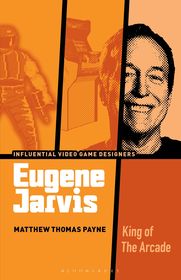
- Publisher's listprice GBP 21.99
-
10 505 Ft (10 005 Ft + 5% VAT)
The price is estimated because at the time of ordering we do not know what conversion rates will apply to HUF / product currency when the book arrives. In case HUF is weaker, the price increases slightly, in case HUF is stronger, the price goes lower slightly.
- Discount 20% (cc. 2 101 Ft off)
- Discounted price 8 404 Ft (8 004 Ft + 5% VAT)
Subcribe now and take benefit of a favourable price.
Subscribe
10 505 Ft

Availability
Estimated delivery time: In stock at the publisher, but not at Prospero's office. Delivery time approx. 3-5 weeks.
Not in stock at Prospero.
Why don't you give exact delivery time?
Delivery time is estimated on our previous experiences. We give estimations only, because we order from outside Hungary, and the delivery time mainly depends on how quickly the publisher supplies the book. Faster or slower deliveries both happen, but we do our best to supply as quickly as possible.
Product details:
- Publisher Bloomsbury Academic
- Date of Publication 20 February 2025
- Number of Volumes Paperback
- ISBN 9798765113547
- Binding Paperback
- No. of pages pages
- Size 216x140x14 mm
- Weight 360 g
- Language English
- Illustrations 48 colour illus 639
Categories
Long description:
This book explores the influential work of Eugene Jarvis, designer of the wildly-successful arcade games Defender, Robotron: 2084, NARC, Smash TV, and Cruis'n USA, among others.
Embracing a variety of genres across decades, the video games of Eugene Jarvis offer a series of design lessons in how to craft coin-operated game machines that can survive and thrive even as the arcade was disappearing from the American landscape. In particular, his titles demonstrate the enduring appeal of gameplay challenges, taboo content, and possessing a larger-than-life form factor and accessible gameplay. Drawing upon multiple interviews with Jarvis and his collaborators, as well as scholarly reflections on game design, historic industry data, and archival documents, this book makes the case that Jarvis is the unparalleled "King of the Arcade" for his ability to craft gameplay experiences that cannot be replicated on home consoles or personal computers.
Table of Contents:
Preface
Foreword
Acknowledgements
1. Introduction: Sex, Drugs, and Arcade-sploitation
2. Challenging Design: The Making of Defender
3. Designing Challenges: Post-Defender Difficulty and the Rise of the Arcader
4. Coin-Op Carnivalesque and Digitized Dystopias
5. Coin-opted Attractions in the Post-Arcade Era
6. In His Own Words: A Conversation with Eugene Jarvis
7. Conclusion: King of the Arcade
Gameography
References
Index






